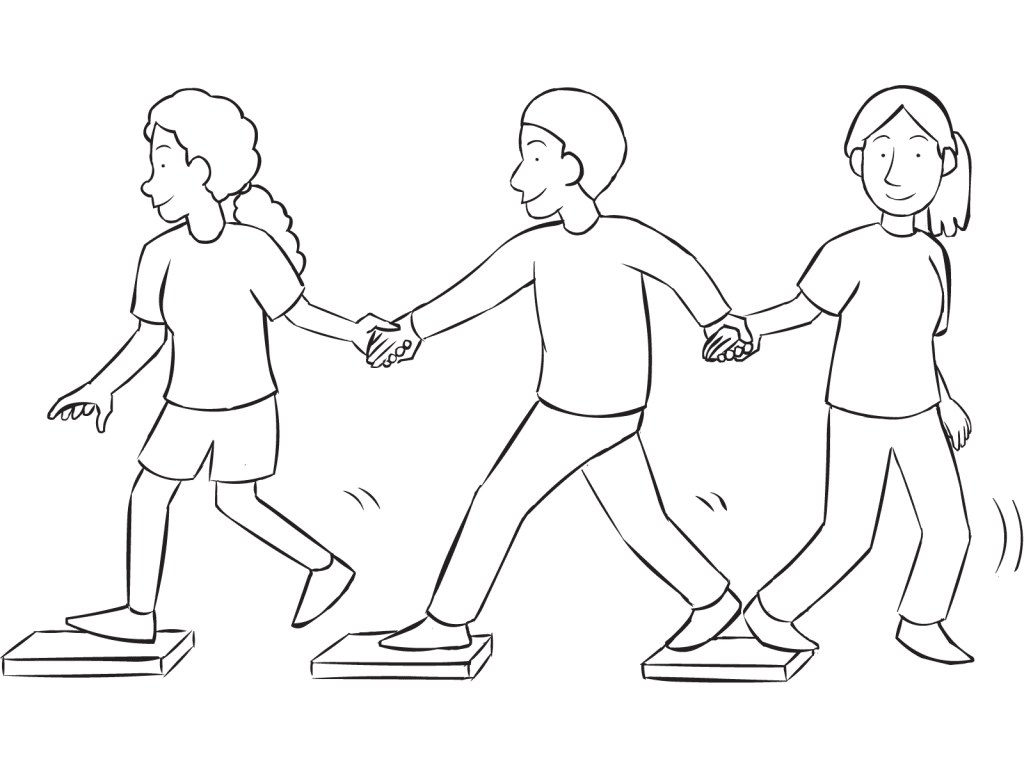Save to Playlist
Step-by-Step Instructions
Resources Premium
How To Play Narrative Premium
Practical Leadership Tips Premium
Social-Emotional Learning Premium
Health & Wellness Programming Premium
Popular Variations Premium
You Might Also Like... Premium
Useful Framing Ideas Premium
Reflection Tips & Strategies Premium
Source Premium

No Props No Problem
Brand NEW book featuring 150+ outrageously fun group games & activities. Scan QR codes to connect to tons of digital content including video tutorials.
Add to Cart
NEW – No Props No Problem
The best-selling book featuring 150+ outrageously fun group games & activities. Scan QR codes to access exclusive digital content including video tutorials.

Free Ice-Breakers & Group Games
Ten of the best no-prop, interactive ‘get-to-know-you’ games & activities. 100% fun, your group will love ’em. Our most successful giveaway, 10,000+ downloads so far…
Top Ten Icebreakers & Group Games
Download our free 28-page ebook jam-packed with outrageously fun activity ideas.
Just one more question:
I am interested in…
Choose a plan that’s right for you
We offer a range of membership plans with no surprises.
Click an option below & discover our simple pricing.

Individual
Click here if you’re a:
- Teacher
- Corporate trainer
- Outdoor educator
- Camp leader
- Youth leader
- Conference organiser
- Therapist/counsellor
Membership Plans

Enterprise
Click here if you represent a:
- School
- Corporation
- Community-based Organisation
Explore plans for
10, 50, 200 or more
potential users
Membership Plans






Love this activity. In groups of 15 – 20, usually i give 1 “stepping stone” per participant and they go about it. Depending on the group, my variation is to walk behind the last person and collect the stones they leave behind. Once the group has reached the safety bank, i congratulate them and we reflect on the experience..
I choose to then tell them that ” there is a new hazard and they now need to return back to the starting point.. but at this time they do not have any stones left.. and possible would have been worthwhile hanging on to the stones even if they think that they do not need it.. lead into conversation about resource management or supports.. who are our supports in our life (parents/ teachers ) etc.. and keeping these alliances strong as we never know when we may require their assistance or when we can be of assistance to them.. lots of possible conversations there… love it
Terrific David, thanks for sharing. Yes, I enjoy guiding a group through a reflection to see how well they prepared for ‘contingencies’ in the event something went wrong. The approach you typically see may also speak to the ‘disposable’ culture some communities have developed.
Can work very well with one group of up to 50 or 60 people. With groups of between 20 and 60 people:
– allow your safe zones to be around 8m apart
– give the group only 8 or 9 stepping stones
– everyone must stay in contact with each other the entire time (holding hands, shirts, etc), from the moment the first person enters the ‘forbidden area’ to the most the last person crosses into the far safe zone. If someone breaks the connection, everyone starts again
– if someone’s foot, heel or toe touches the ground off the stepping stone, everyone starts again
– when they start again, they recover any lost stepping stone
– the last person to come across the ‘forbidden area’ must collect all the stepping stones